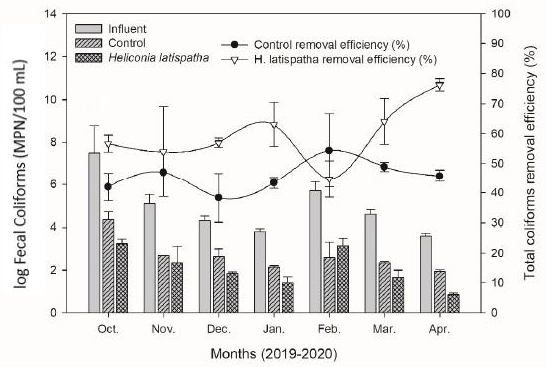 |
|
The aim of this study was to evaluate the development and effect of Heliconia latispatha in pilot-scale constructed wetlands (CWs) for the treatment of pig wastewater mixed with domestic wastewater, using PET waste as a substitute for the filter medium, in a tropical climate. Six cells (1.6 m long, 0.40 m wide and 0.65 m high) filled with rough recycled PET waste were used; three operated with vegetation and three without vegetation and the study lasted eight months. The results showed an excellent development of H. latispatha under the flooded conditions in the CWs, reaching a level of development similar to the level of development in commercial soil crops. The good development of the plant was reflected in the remarkable increase in plant height (74.3%), stem thickness (48.6 %), number of plants (350%) and inflorescences (250%). In addition, the presence of H. latispatha significantly influenced the removal of contaminants (p<0.05) such as COD (chemical oxygen demand), TN (total nitrogen), TP (total phosphorus) and TC (total coliforms), so that in the planted cells, higher removals were achieved by 7.8%, 8.5%, 18% and 13.7% respectively, compared to systems without vegetation. The production of H. latispatha flowers and the good removal of pollutants in the subsurface flow CWs make the system a viable alternative for the production and commercialization of H. latispatha under tropical climates while at the same time the wastewater is treated.
Keywords: Total Nitrogen, Total Phosphorus, Ornamental plants, Wastewater Treatment, Tropical Zones.
|
|
 |

